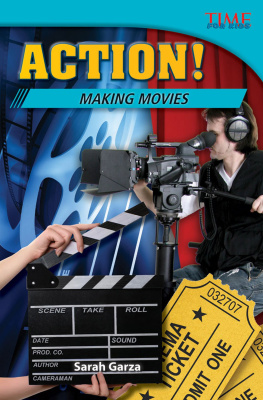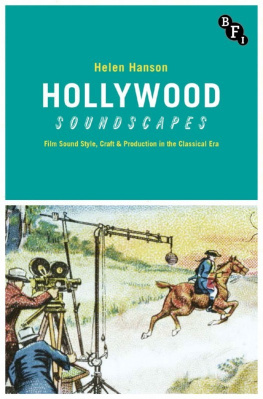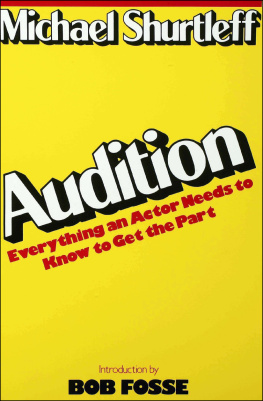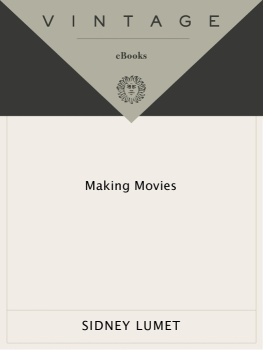What Lumet is writing [is] the mystery of narrative art itself.
Full of energy, enthusiasm and wisdom. Its all engrossing because [Lumet] speaks so fervently and opinionatedly about matters on which he has earned the right to opinions.
The film bible from a master. It tells in meticulous detail the step-by-step process of making a movie. You feel youre on the set. A must.
Lumet has written a charming memoir conveying the joy in his craft, the great pleasure he takes in making movies rich in the technical side of movie making even as it serves as an easily accessible introduction to how movies are made by a veteran of the craft.
Sidney is the maestro. His book is like his filmsfrank, honest, pacey, and very, very smart. Anyone seriously interested in films should read it.
Contents
ONE
TWO
THREE
FOUR
FIVE
SIX
SEVEN
EIGHT
NINE
TEN
ELEVEN
TWELVE
THIRTEEN
Preface
I once asked Akira Kurosawa why he had chosen to frame a shot in Ran in a particular way. His answer was that if hed panned the camera one inch to the left, the Sony factory would be sitting there exposed, and if hed panned an inch to the right, we would see the airportneither of which belonged in a period movie. Only the person whos made the movie knows what goes into the decisions that result in any piece of work. They can be anything from budget requirements to divine inspiration.
This is a book about the work involved in making movies. Because Kurosawas answer stated the simple truth, most of the movies Ill discuss in this book are pictures I directed. With those, at least, I know exactly what went into each creative decision.
Theres no right or wrong way to direct a movie. What Im writing about is how I work. For students, take it all; take what you want and throw the rest away; or throw it all away. For a few readers, perhaps it might make up for the times a movie crew has tied you up in traffic, or shot in your neighborhood all night long. We really do know what were doing: It only looks as if we dont. Serious work is going on even when it seems as if were just standing around. For everyone else, Ill try to tell you as best I can how movies are made. Its a complex technical and emotional process. Its art. Its commerce. Its heartbreaking and its fun. Its a great way to live.
A warning about what you wont find in the book: There are no personal revelations other than feelings arising from the work itselfno gossip about Sean Connery or Marlon Brando. Mostly I love the people Ive worked with in whats necessarily an intimate process. So I respect their foibles and idiosyncrasies, as Im sure they respect mine.
Finally, I must ask for an indulgence from the reader. When I began making movies, the only crew jobs available to women were as script girls and in the editing department. As a result, I still think of movie crews as male. And in fact, they still predominantly are. Ive therefore developed the lifetime habit of using male pronouns. The word actress or authoress always struck me as condescending. A doctors a doctor, right? So Ive always referred to actors and writers, regardless of their sex. So many movies that Ive made involved police before women played any significant role on the force, so even my casts have been heavily dominated by men. After all, my first movie was called 12 Angry Men. In those days, women could be excused from jury duty simply because they were women. The male pronouns I use almost always refer to both men and women. Most people working in the movies today have been brought up in a far more equally balanced world than I was. Hopefully, such indulgences wont have to be asked for again.
ONE
The Director:
The Best Job in the World
The entrance to the Ukrainian National Home is on Second Avenue between Eighth and Ninth streets in New York City. Theres a restaurant on the ground floor. The odor of pierogi, borscht, barley soup, and onions hits me as soon as I walk in. The smell is cloying but pleasant, even welcoming, especially in the winter. The rest rooms are downstairs, always reeking of disinfectant, urine, and beer. I go up a flight of stairs and walk into an enormous room the size of a small basketball court. It has colored lights, the inevitable revolving mirrored ball, and a bar along one wall, behind which are stacked sound amplifiers in their suitcases, empty cartons, boxes of plastic garbage bags. Setups are also sold here. Stacks of folding chairs and tables are piled along the walls.
This is the ballroom of the Ukrainian National Home, where loud, stomping accordion-accompanied dances are held on Friday and Saturday nights. Before the breakup of the USSR, there would be at least two Free the Ukraine meetings held here every week. The room is rented out as often as possible. And we have now rented it for two weeks to rehearse a movie. Ive rehearsed eight or nine movies here. I dont know why I feel like this, but rehearsal halls should always be a little grungy.
Two production assistants are nervously awaiting me. Theyve started the coffee machine. In a plastic box, amid ice cubes, are containers of juice (freshly squeezed), milk, and yogurt. On a tray, bagels, Danish, coffee cake, slabs of wonderful rye bread from the restaurant downstairs. Butter (whipped and packaged) and cream cheese (whipped and packaged) are waiting, plastic knives alongside. Another tray holds packets of sugar, Equal, Sweet n Low, honey, tea bags, herb teas (every kind imaginable), lemon, Redoxon (in case anyone has the first signs of a cold). So far so good.
Of course, the PAs have set up the two rehearsal tables the wrong way. Theyve placed them end to end, so the twelve or so people due here in half an hour will have to sit stretched out as if in a subway car. I have them move the tables side by side, putting everybody as close together as possible. Newly sharpened pencils are lined up in front of each chair. And a fresh script. Even though the actors have had their scripts for weeks, its amazing how often they forget them on the first day.
I like to have as much of the production team as possible at the first reading. Already present are the production designer, costume designer, second assistant director, the Directors Guild of America (DGA) trainee (an apprentice), the script girl, the editor, and the cameraman, if hes not out doing tests on locations. As soon as the tables are in place, they descend on meall of them. Floor plans are rolled out. Swatches. Polaroids of a red 86 Thunderbird and a black 86 Thunderbird. Which do I want? We still dont have permission for the bar on Tenth Street and Avenue A. The guy wants too much money. Is there another location that will work as well? No. What should I do? Pay him the money. Truffaut has a moment in Day for Night that touches the heart of every director. Hes just finished an arduous days shooting. Hes walking off the set. The production team surrounds him, peppering him with questions for tomorrows work. He stops, looks to the heavens, and shouts, Questions! Questions! So many questions that I dont have time to think!









